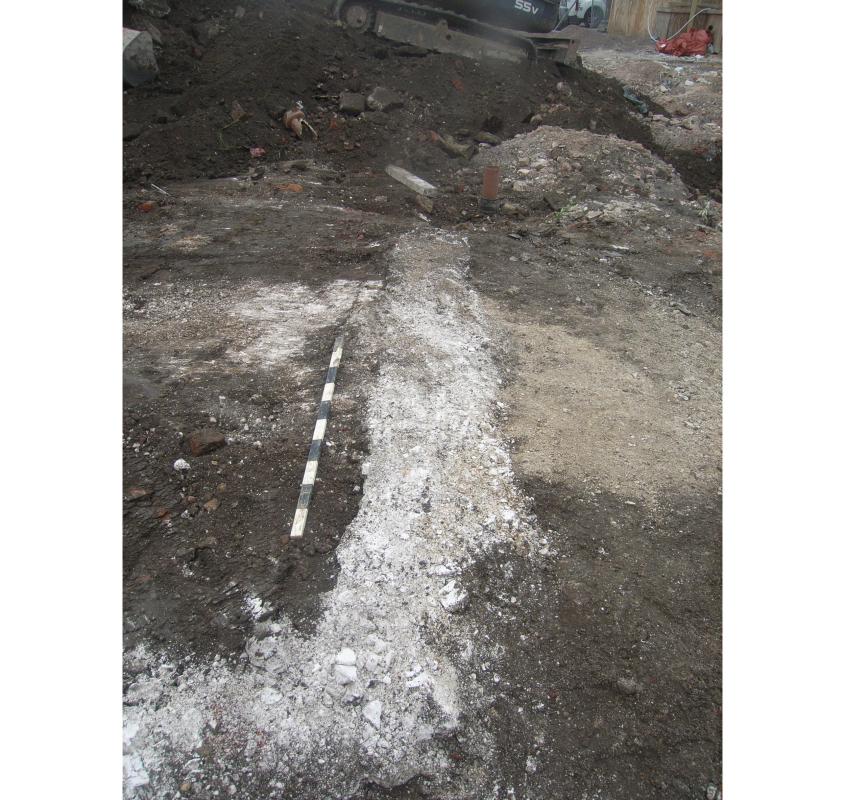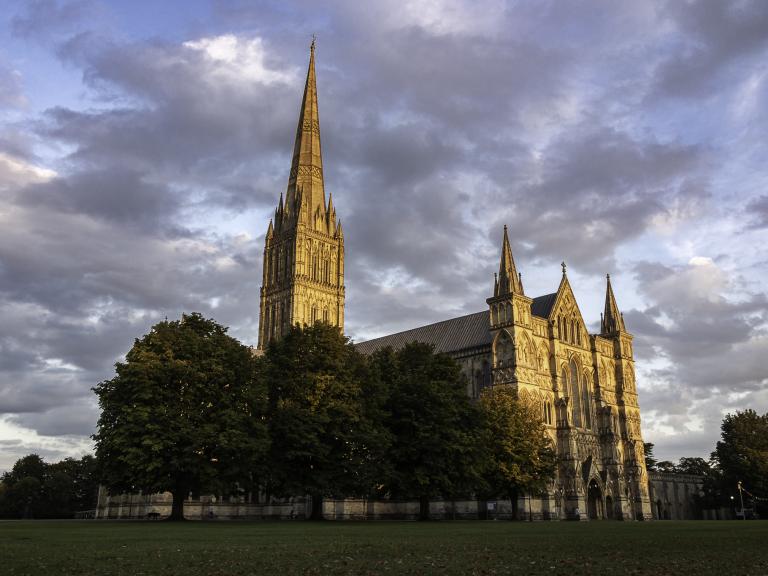From St. Edmund’s Church Street, we arrive behind the former Black Horse Inn, an establishment which gave the chequer its name. These three small projects, which were undertaken in adjoining properties in 2014 and 2015, show how archaeology now extends beyond digging to also compiling records of standing buildings which help document the past.
The sequence began when two small trenches were excavated at the rear of 7–11 Brown Street. The results revealed the surface of a probable medieval courtyard, two adjacent late medieval or early post medieval chalk-lined cess pits and a post-medieval rubbish pit.
A subsequent archaeological watching brief at 32 Winchester Street added to the detail by locating a chalk wall foundation on a similar alignment and depth below the ground to those in Brown Street. The foundation was thought to represent part of a small, lightly constructed, later medieval or post-medieval out-building.

A final phase of work involved compiling a photographic and written record of two single-storey buildings before they were demolished to allow redevelopment at 13 Brown Street. The buildings were of no intrinsic value and were probably erected in the 1940s but nevertheless continued the tradition of infilling tenements with outbuildings. As such they merited record as part of Salisbury’s heritage.
On first inspection we might conclude that these results were unspectacular; nevertheless, certain aspects of everyday medieval life can still be opened-up to us. The discovery of a 15th century copper alloy jetton from the surface of the courtyard, introduces the world of bankers, money changers, merchants and shop keepers involved in commercial aspects of medieval Salisbury. Jettons functioned primarily as reckoning counters and were used on gridded boards or cloths, similar to abacus grids, to calculate accounts and similar mathematical transactions. They were also used as gaming counters confirming that they held no monetary value. This particular jetton was struck at Tournai, a mint that exported large numbers of similar counters to Britain following the battle of Agincourt in 1415. Archaeological excavations have significantly improved the recorded distribution of these objects in the city; six were found during excavations at the Anchor Brewery, a site we will examine in several weeks’ time.
The two chalk lined cess pits allow us to consider how citizens dealt with human waste and what can be learned from it about their diet. Medieval cess pits were common in the city. They were often located at the furthest limits of the property, but some were more accessible and placed closer to home in the back yard. They would have been emptied periodically. For those inclined to do so, sewage was also dumped in the street where it was theoretically flushed away in the water courses which circulated around the city. As we considered at the former ATS garage site last week, sewage invariably seeped into the wells and water courses polluting the drinking water.
Living conditions were undeniably harsh; however, the distinctive layers of green mineralised cess which we find at the bottom of the cesspit contain a wealth of information. Under microscopic examination these deposits can reveal remains that are not immediately visible to the excavator, including bones, seeds and stones, which passed through the human gut, and indicate what people were eating. Residues have shown that medieval residents consumed a range of fish, including conger eel, herring, cod and plaice. The diet was supplemented by a variety of wild fruits, including plums, sloes, cherries, apples, blackberries, raspberries and strawberries. More exotic species included grapes and figs. Culinary items were completed by a range of vegetables, salads and cereal products and flavoured with black pepper, coriander, fennel, dill and celery. These luxury spices may have entered the city as part of the merchant economy, which reintroduces accountancy, with links to the jetton. Cesspit residues also contain species with known medicinal properties including henbane and hemlock, suggesting that residents did not restrict plant use to culinary requirements.

Magnified examples of environmental materials, including raspberry, apple and elderberry seeds and wheat chaff
Small scale projects of this type, therefore, can help expand our knowledge. Documenting buildings before their demolition also has value; our city is constantly changing, as our ‘before’ and ‘after’ photographs used in these web pages show. Without these archives of photographs, the former character of the city, including some of its more ephemeral workshops and out-buildings, can easily be lost and forgotten.

'Before' and 'after' images of the site at 7-11 Brown Street illustrate the city's development
